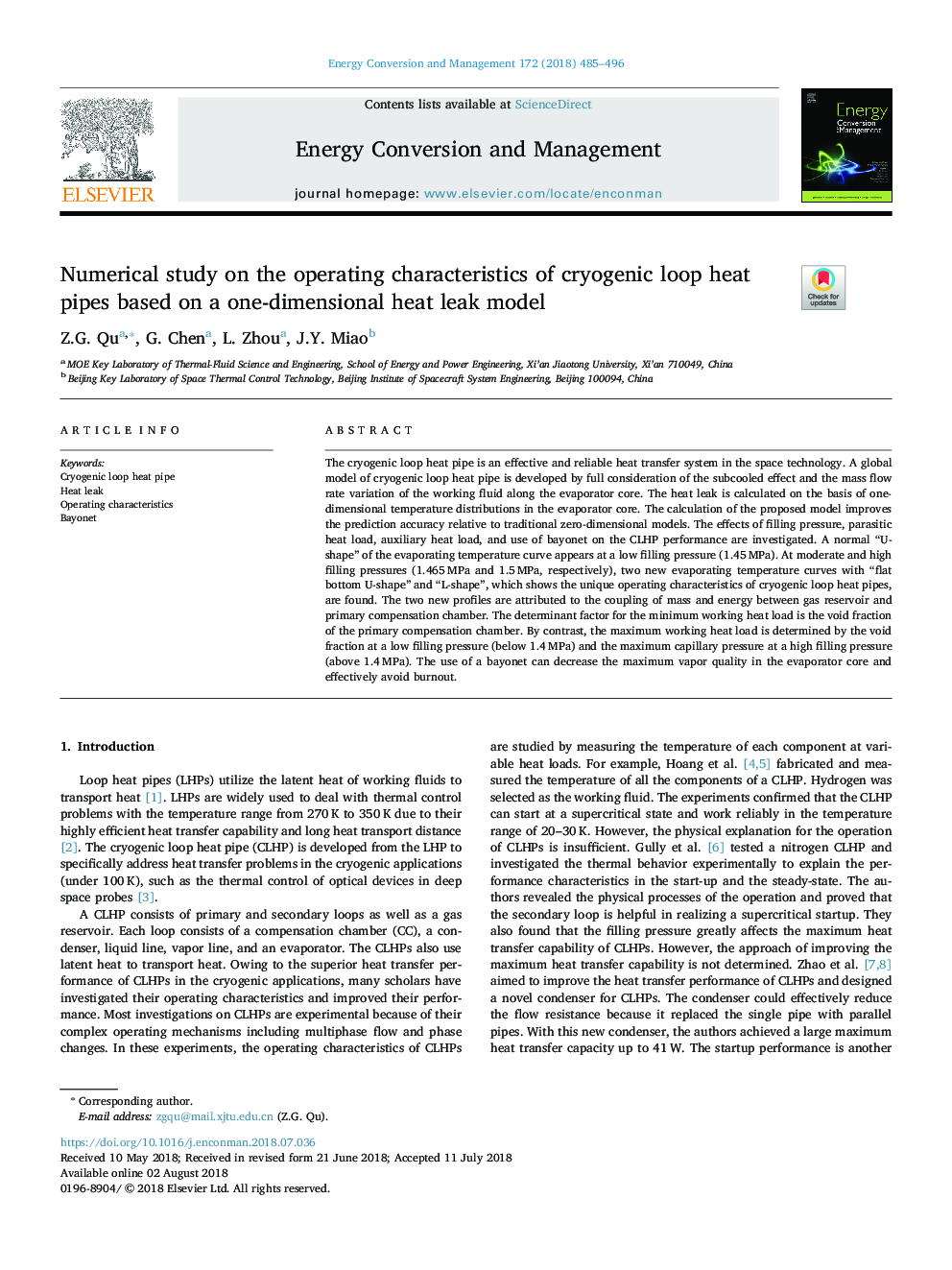| Article ID | Journal | Published Year | Pages | File Type |
|---|---|---|---|---|
| 7158005 | Energy Conversion and Management | 2018 | 12 Pages |
Abstract
The cryogenic loop heat pipe is an effective and reliable heat transfer system in the space technology. A global model of cryogenic loop heat pipe is developed by full consideration of the subcooled effect and the mass flow rate variation of the working fluid along the evaporator core. The heat leak is calculated on the basis of one-dimensional temperature distributions in the evaporator core. The calculation of the proposed model improves the prediction accuracy relative to traditional zero-dimensional models. The effects of filling pressure, parasitic heat load, auxiliary heat load, and use of bayonet on the CLHP performance are investigated. A normal “U-shape” of the evaporating temperature curve appears at a low filling pressure (1.45â¯MPa). At moderate and high filling pressures (1.465â¯MPa and 1.5â¯MPa, respectively), two new evaporating temperature curves with “flat bottom U-shape” and “L-shape”, which shows the unique operating characteristics of cryogenic loop heat pipes, are found. The two new profiles are attributed to the coupling of mass and energy between gas reservoir and primary compensation chamber. The determinant factor for the minimum working heat load is the void fraction of the primary compensation chamber. By contrast, the maximum working heat load is determined by the void fraction at a low filling pressure (below 1.4â¯MPa) and the maximum capillary pressure at a high filling pressure (above 1.4â¯MPa). The use of a bayonet can decrease the maximum vapor quality in the evaporator core and effectively avoid burnout.
Keywords
Related Topics
Physical Sciences and Engineering
Energy
Energy (General)
Authors
Z.G. Qu, G. Chen, L. Zhou, J.Y. Miao,
